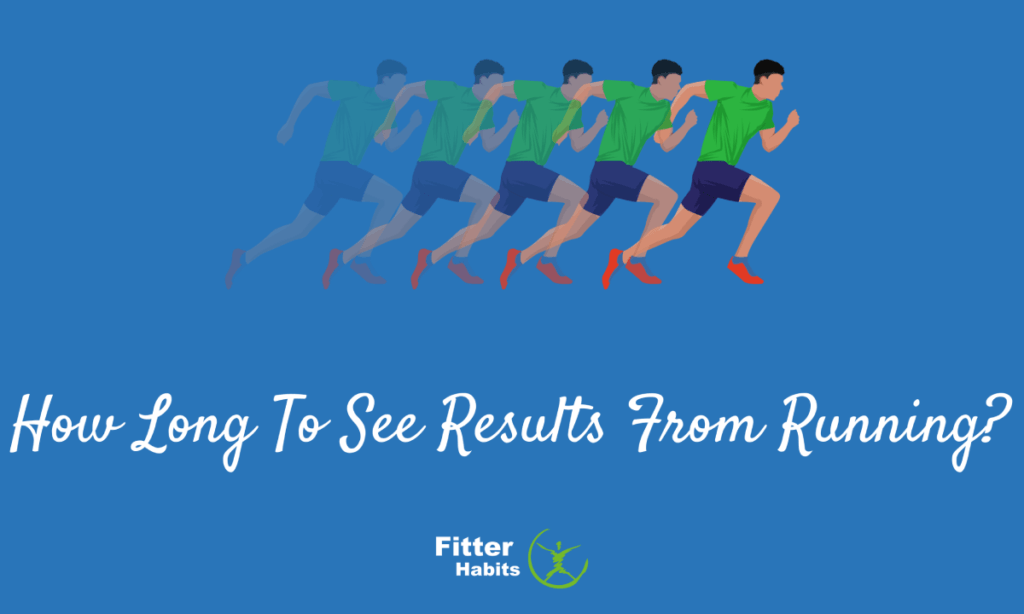Wondering how long to see results from running? You need to make sure your nutrition, rest, and cross-training are up to par.
When I was dealing with the evil mid-20s metabolism shift that plagues so many, I remember thinking that I could run off the recent 15 (ok, if I’m being honest — 20) pounds I had put on due to work stress, happy hours, and too much takeout on the weekends.
I knew years of high school track helped me maintain a healthy body weight as a teen, and I figured that following the same training plan (a combination of speed work, strength training, and running longer distances on the weekends) I used in high school would give me the same results.
Wrong.
While I felt the health benefits of running — better sleep, an increased fitness level, a lower heart rate, easier tempo runs — I learned that I couldn’t outrun my lifestyle.
To see the physical results of all the running I was doing regularly, I didn’t need to run more miles a day — I needed to change my habits. Getting to a healthy weight wasn’t as easy as it was in my teens.
Here, we’ll take a look at what you need to know to see physical progress from running.
Contents
Common Frustrations With Running Progress
If you’re running for weight loss and feeling frustrated that it’s taking a long amount of time to see results, you’re not alone.
Some common complaints from runners around lack of progress include:
- Slow weight loss (or even weight gain) despite regular running and other forms of aerobic exercise.
- Increased levels of body fat when training for a half-marathon or longer distance.
- Unwanted muscle mass gains.
Not Seeing Results? Check out These Common Slow-Progress Culprits

Common issues that hold runners back from making progress in their fitness level and enjoying the full health benefits of running include:
- Eating to “make up” for exercise calories — If you’re working to lose weight or body fat, there’s usually not a need to eat extra calories to make up for what you’ve burned after a long run (unless you’re working out for more than an hour).
- Failing to get proper rest after intense aerobic workouts — Running is hard work, especially if you’re a new runner. While you may not necessarily need eight hours of sleep (some people feel better on less), it’s important that you give your muscles and mind plenty of time to relax and recover.
- Using only one type of training — Running is a fantastic way to get in shape, but to make progress (both in weight loss and running speed or endurance), you’ll want to incorporate HIIT and strength training.
- Working with a personal trainer, but not a dietitian — Working with a certified personal trainer is an excellent move to boost your fitness, but you’ll likely need guidance in the kitchen as well. If you’re struggling to lose weight, reach out to a registered dietitian to troubleshoot your meal plan.
How Long Does It Take to See Results From Running?
While some programs promise to have you in tip-top shape in 30 days, this isn’t realistic.
The amount of time it will take to see results depends on your goals. Want to have more energy and sleep better? You’ll likely see these and other health benefits within two to three weeks of starting a running training program.
Working to get ripped? If you’re running and cross-training regularly and are following a nutrition program that makes sense for your goals, you’ll likely see progress in two months, with major changes happening around the four-month mark.
Ready to Take Your Fitness And Physique to the Next Level?

Follow these tips to stay on the path to your goals.
- Track what you eat — Both paper and pencil and digital fitness trackers are great ways to keep yourself accountable and more mindful of your nutrition choices.
- Note your progress — To stay motivated (or to know that something isn’t working), you need to keep track of your progress. Whether you choose to look at your fastest mile each month, the number on the scale, or how your pants fit doesn’t matter — just choose a way to track progress, and stick to it.
- Switch it up — Running is great, but it’s not all you need for a well-rounded fitness routine. HIIT classes, sessions with a personal trainer, strength training, and cycling are all great ways to keep your muscles guessing on what’s coming next.
- See your doctor — If you can honestly say that you’re eating in a caloric deficit, getting enough rest, and working out hard, but you’re still not losing weight, it’s time to schedule a doctor’s appointment.
The Final Word On How Long To See Results From Running
The amount of time it will take you to see results from running will depend on your starting point, goals, and training program. Expect to notice changes in the way you feel after about two weeks and changes in how you look at about the two-month mark.
FAQs On How Long To See Results From Running
What are some common mistakes when running for weight loss?
Whether you’re a new runner or a seasoned athlete, common mistakes when running for weight loss include not getting enough rest, overeating, and failing to cross-train.
How can I speed up my weight loss?
Working with a nutritionist or a personal trainer, getting plenty of rest, tracking your progress, and cross-training can all speed up fat loss.
How long will it take me to see physical results from running?
It’ll likely take about two months to notice physical changes from your running training program.



